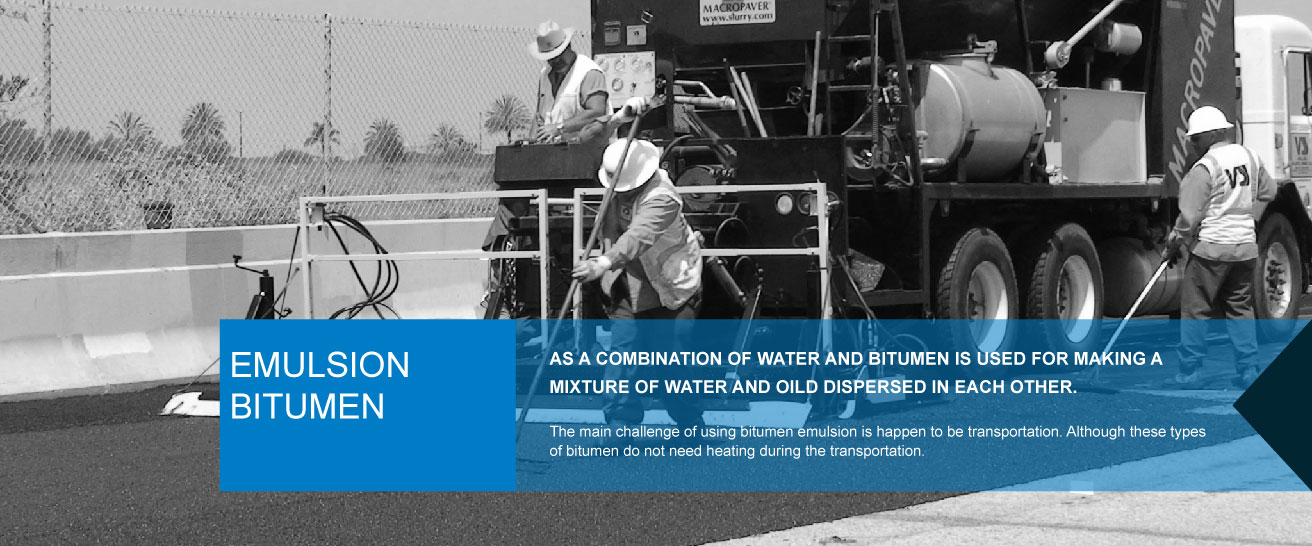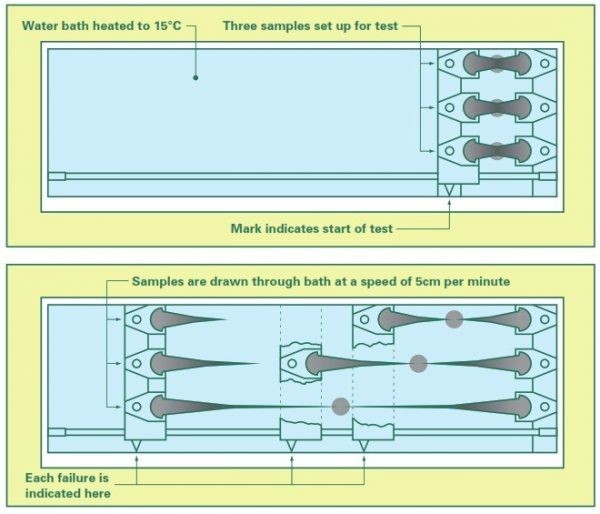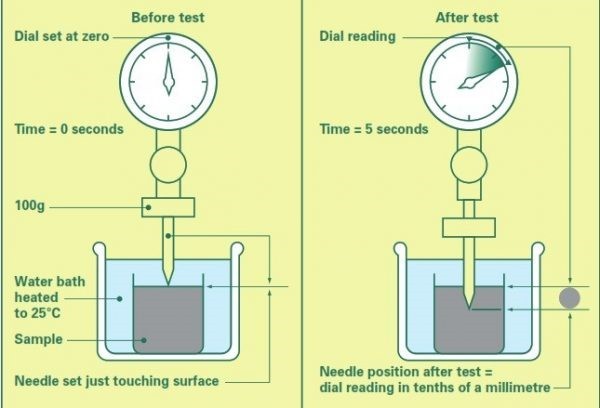
Bitumen Emulsion
Bitumen emulsion is a liquefied type of bitumen with a low viscosity. By dispersing bitumen in water and adding an emulsifier, ordinary bitumen turns into a low viscosity liquid that can easily be used in a variety of applications, including repairing and maintaining roads, waterproofing, spraying, etc.
Emulsions make it easy to handle, store, transport, and apply bitumen at a lower temperature: Since this type of bitumen is liquid, there is no need to heat it before application. Moreover, applying bitumen emulsions using cold techniques reduces the consumption of energy and makes road construction environmentally friendlier.
What is Bitumen Emulsion Composition?
Bitumen emulsion is a combination of water and bitumen. As the mixture of water and oily products quickly separate, a third component is normally added to the mixture, in order to make it more stable.
Known as emulsifier, this third component is used for making a mixture of water and oil dispersed in each other. In addition to their ability to reduce the tension between oil and water molecules, emulsifiers have an electronic charge that affect the molecules of bitumen emulsion and lead to the categorization of it into Cationic and Anionic.
Cationic emulsifiers, for example, form a layer of positive charge around the bitumen droplets that prevent them from joining each other. This makes bitumen dispersion in water more durable.
The electronic charge of bitumen emulsion decides on what kind of surface it should be used. Some aggregates (such as marble aggregates) mix better with anionic bitumen emulsion and some others are a better solution to cationic bitumen emulsion (such as granite aggregates).
How is Bitumen Emulsion Manufactured?
Bitumen emulsion is usually made using a collide mill, which mixes bitumen with water and emulsifier. In this process, bitumen is milled into very small droplets that can easily suspend in the water.
With the addition of emulsifiers, bitumen droplets become more water friendly. Water droplets as well move closer to the tiny droplets of bitumen, making sure that the final bituminous product is stable enough.
In the manufacturing process, many factors such as droplets’ size, chemical addition, and the temperature of various components are accurately controlled. The resulting bitumen has a consistent structure that makes it unique for various applications.
In the complex world of bitumen, some grades are suitable for hot techniques of road construction and some others suit cold techniques. For cold techniques of road construction, the viscosity of bitumen is reduced, thus, there is no need for heating it before application. Low viscosity bitumen is highly recommended whenever the weather is cold or a bituminous spray is needed.
Bitumen emulsion and cutback bitumen are two well-known types of bitumen suitable for cold techniques; however, their application and advantages are different. In what follows, we shed some lights on bitumen emulsion’s application and answer the question of why it is better to use emulsified instead of cutback bitumen.
What is Bitumen Emulsion Used for?
Bitumen emulsions were introduced to the industry in the 20th century, mainly for spray applications; but today, they are used for both mixing and spraying in road construction and pavement maintenance. In what follows we will explain more about bitumen emulsion uses including preventive and corrective maintenance.
Different Types of Bitumen Emulsion and Their Application
To make a road surface more durable, various properties of bitumen emulsion should be considered. At Infinity Galaxy, we test bitumen emulsions to classify them based on viscosity value, the electronic charge of their particles, and the setting type (Our comprehensive guide on different grades of bitumen emulsion is available here). In what follows, we explain the applications of bitumen emulsion based on the result of major tests:
Application according to viscosity level
For deciding about the best grade of bitumen emulsion that suits your required application, referring to the results of viscosity tests is necessary.
For dense graded aggregates, a thinner viscosity of bitumen emulsion is needed; however, to achieve an appropriate thickness, open graded aggregates require a thicker viscosity of bitumen emulsion.
Application according to setting type
Choosing the right setting type is crucial when bitumen emulsion is applied on a surface.
Rapid setting emulsion sets quickly in contact with aggregates, therefore, it is highly used in low surface of roads, particularly chipseals and surface dressing.
Medium setting emulsion are used in premixing of bitumen emulsion and coarse aggregate, particularly open graded mixes.
Slow setting emulsion sets very slowly. That’s why it is suitable for being mixed with aggregates of high surface area. They are the most stable type of emulsion and can be used in dense graded aggregate bases, slurry seals, and recycling asphalt.
Application according to the electronic charge of Emulsion particles
Bitumen emulsions are always examined in terms of the electronic charge of their particles.
A particle test charge leads to the classification of bitumen emulsion into two categories of Anionic and Cationic (Click for more details). Some aggregates mix better with anionic bitumen emulsion and some others are a better solution to cationic bitumen emulsion.
Bitumen Emulsion
Advantages and Disadvantages
What is the Difference between Ordinary Bitumen and Emulsion Bitumen?
Bitumen emulsion is a chemical combination of bitumen, water, and an emulsifying agent. This liquefied bitumen is more efficient than ordinary bitumen for road construction, particularly in a lower temperature. With a lower viscosity in comparison to ordinary bitumen, this type of binder doesn’t need to be heated before being applied to the surface. After the application of bitumen emulsion, the water releases and the bitumen mix starts to set.
As a low temperature technique, using emulsified bitumen is also suitable for reducing emissions and energy consumption. The construction of a roadway with bitumen emulsion (cold-mix bitumen) is likely to consume approximately half the energy of paving a road with hot-mix bitumen.
What are the advantages of Bitumen Emulsion to Cutback?
Both emulsion and cutback bitumen have a lower viscosity level in comparison to ordinary bitumen; however, they are not the same. In order to loose viscosity, bitumen is mixed with petroleum solvents such as kerosene, naphtha, diesel oil, etc. to form cutback bitumen. In emulsions the solvent is water, which reduces the risks of fire and makes the final binder Eco-friendlier than petroleum-based cutbacks.
Bitumen emulsions is more tolerant than cutback bitumen and develop final strength more quickly. This type of bitumen give good results even when chippings of the surface are damp.
Bitumen emulsion is also compatible with other water-based binders like rubber, latex, and cement, since it does not include any petroleum solvents. Being water-based makes this type of bitumen more suitable for application in a rainy weather as well.
What are the Disadvantages of Bitumen Emulsion?
The main challenge of using bitumen emulsion is happen to be transportation. Although these types of bitumen do not need heating during the transportation, they are likely to lose their viscosity after a period of time, mainly because they contain a reasonable amount of water,
To ensure the stability of bitumen emulsions during storage or transportation, some producers add calcium chloride to bitumen. Calcium chloride is applied to reduce the osmosis of water into the bitumen and the increase in viscosity during the storage.
For choosing the best grade and type of bitumen emulsion, you need to be an expert. Depending on the aggregate type, the setting time, temperature of the site, etc. bitumen emulsion can behave differently during the time. In case you need any information about bitumen emulsion and its application, you can add a comment below or send an email here. Our support team at Infinity Galaxy are ready to help you pick the right grade of bitumen emulsion.
What Factors are Important in Grading Bitumen Emulsion?
Viscosity
The first vital factor for grading bitumen emulsion is the viscosity value. The viscosity of bitumen emulsion is determined by its bitumen content. An emulsion with small droplet size and a narrow distribution will give a higher viscosity.
Ductility
To indicate the bitumen resistance to breaking, a ductility test is done. This testing system measures the extent to which a sample of bitumen can stretch before breaking. A bitumen emulsion that its ductility is more than 40 cm makes the surface of a road safe and strong to heavy traffic and do not break easily.
Penetration
The softness level of bitumen is indicated by entering a standard needle into it. The harder the bitumen, the better it is for using in hot temperatures. The standard range of penetration can vary among different grades of bitumen emulsion.
Storage Stability
This parameter evaluates the stability of bitumen emulsion during the storage. known also as sedimentation, storage stability shows if the bitumen emulsion droplets settle after manufacturing or not.
For testing the sedimentation of bitumen emulsion, a sample of bitumen is stored in a cylinder in the room temperature. After 24 hours, two sample will be taken, one from the top of the cylinder and the other from the bottom. The weight of two samples will be compared at the next stage. The difference between two samples’ weight should not exceed 1 unit.
Two main factors that affect the storage stability of bitumen emulsion are viscosity level and the droplet size. A bitumen with smaller droplets has less risk of settlement.




